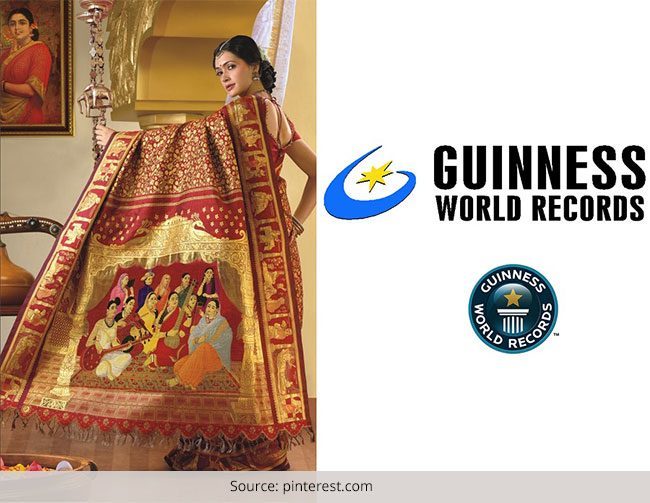https://goo.gl/VT7KrS
Click On The URL Or PICTURE for the complete News, Videos and more photos.
A sari, saree, or shari is a female garment from the Indian subcontinent that consists of a drape varying from five to nine yards (4.5 metres to 8 metres) in length[2] and two to four feet (60 cm to 1.20 m) in breadth that is typically wrapped around the waist, with one end draped over the shoulder, baring the midriff. There are various styles of sari draping, the most common being the Nivi style, which originated in Andhra Pradesh.
The sari is usually worn over a petticoat (called ‘parkar’ in Marathi lahaṅgā or lehenga in the north; pavadai in Tamil, pavada (or occasionally langa) in Malayalam, Kannada and Telugu, chaniyo, parkar, ghaghra, or ghagaro in the west; and shaya in eastern India), with a fitted upper garment commonly called a blouse (ravike in South India and choli elsewhere). The blouse has short sleeves and is usually cropped at the midriff. The sari is associated with grace and is widely regarded as a symbol of grace in cultures of the Indian subcontinent.
The word sari described in Sanskrit which means ‘strip of cloth’ and śāḍī in Pali, and which was corrupted to sāṛī in modern Indian languages. The word ‘Sattika’ is mentioned as describing women’s attire in ancient India in Sanskrit literature and Buddhist literature called Jatakas. This could be equivalent to modern day ‘Sari’. The term for female bodice, the choli evolved from ancient Stanapatta. Rajatarangini (meaning the ‘river of kings’), a tenth-century literary work by Kalhana, states that the choli from the Deccan was introduced under the royal order in Kashmir.
In the history of Indian clothing the sari is traced back to the Indus Valley Civilisation, which flourished during 2800–1800 BC around the northwestern part of the Indian subcontinent. Cotton was first cultivated and woven in Indian subcontinent around 5th millennium BC. Dyes used during this period are still in use, particularly indigo, lac, red madder and turmeric. Silk was woven around 2450 BC and 2000 BC. The earliest known depiction of the sari in the Indian subcontinent is the statue of an Indus Valley priest wearing a drape.
Source : wikipedia


